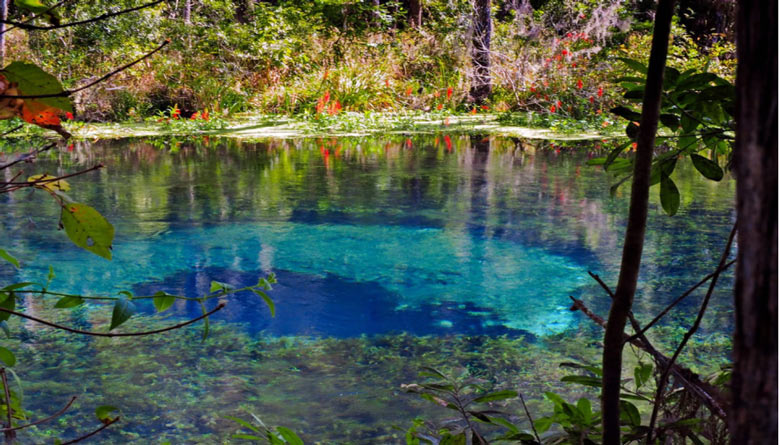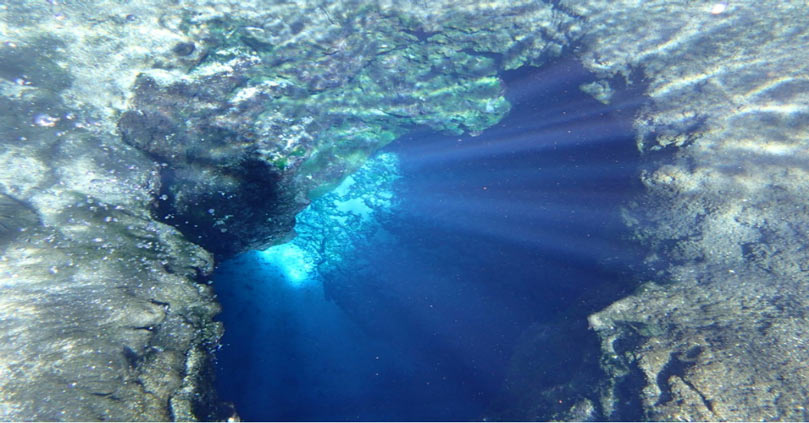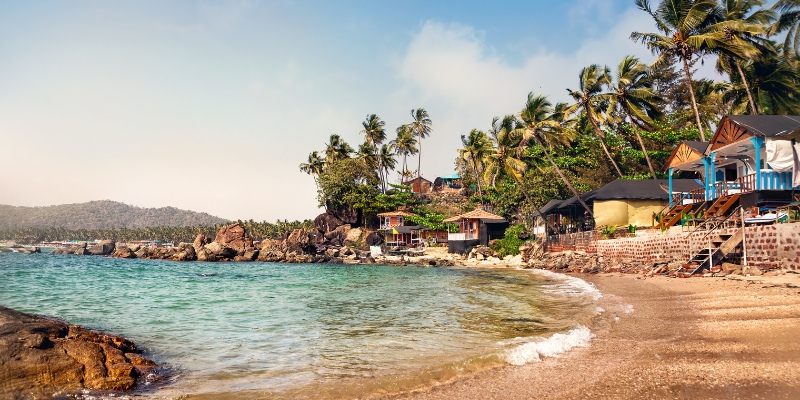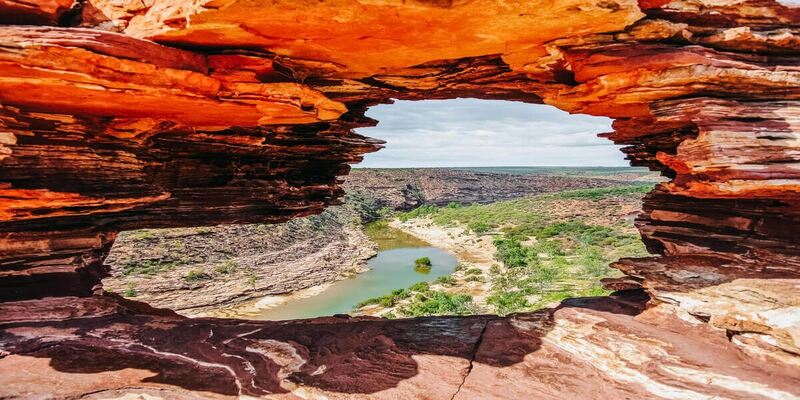Are you looking for an exciting destination to explore in sunny Florida? The Blue Hole Spring might be the perfect spot for your next adventure! Known as a “gator hole” because of its deep waters and plentiful alligators, this spring offers visitors plenty of other attractions.
In fact, with its crystal-clear blue water surrounded by lush vegetation, it makes for one of the most picturesque stops in North Central Florida. Read on to learn why Blue Hole is a must-visit location during your travels in the Sunshine State!
Florida's Popular Blue Hole Spring
is a popular tourist destination for those seeking adventure and relaxation. Located in North Central Florida, the spring's crystal-clear blue water makes it an idyllic spot to take in the sights and sounds of nature. The area is also home to plenty of wildlife, including alligators, making it a great place for wildlife viewing.
Things You Need to Know Before Visiting Florida's Popular Blue Hole Spring
1. Blue Hole Spring is the deepest of all-natural freshwater springs in North Central Florida, with depths up to 143 feet.
2. It's a favorite spot for snorkeling and scuba diving, offering visitors an underwater view of the area's abundant aquatic life.
3. The spring is also home to plenty of wildlife, including alligators, raccoons, otters, turtles, and more!
4. Fishing is allowed at Blue Hole Spring with a valid fishing license from the Florida Fish and Wildlife Conservation Commission (FWC).
5. Camping is not permitted on site; however, nearby camping locations can be found within 10 miles of the spring’s location.
6. Visitors can bring their kayaks and canoes to explore the area.
7. There is no fee associated with visiting the spring; however, restrooms, concessions, and a picnic area are onsite for those wishing to stay longer.
8. The spring has limited access hours from 8 am – 5 pm Thursday-Sunday (closed Mondays - Wednesdays).
9. Swimming is not recommended as Blue Hole Spring's deep waters are dangerous and have strong currents.
10. Visitors should exercise caution when around alligators as they may become defensive or aggressive if threatened.
11. Be sure to bring mosquito repellent to avoid bites!
12. It’s important to bring plenty of water and snacks as no nearby stores or restaurants exist.
13. wear sturdy shoes while exploring the area’s trails, as paths can be uneven and slippery.
14. If you plan on bringing a pet, all dogs must be kept on a leash and should not enter the spring.
15. Trash cans are provided throughout the area; please remember to clean up afterward!
16. Never feed wild animals to protect their natural environment and keep wildlife from becoming dependent on humans for food.
17. Swimming with dolphins is prohibited in this area due to Florida state laws that ensure the safety of marine mammals such as dolphins and manatees.
18. No motorized boats are allowed in the spring; however, visitors may use electric trolling motors.
19. Nighttime swimming is not recommended due to low visibility and potential wildlife presence.
20. take plenty of photographs and share your experience with friends and family! Blue Hole Spring's beauty is best enjoyed when shared with others.
The natural wonders of Florida are waiting for you--explore Blue Hole Spring today! With its crystal-clear blue water and plentiful wildlife, it promises an unforgettable experience that won't soon be forgotten!
So what are you waiting for? Pack up your things and head down to North Central Florida for a day full of exploration at Blue Hole Spring!

Necessary Equipment for a Safe Dive
- Mask and snorkel
- Buoyancy compensator device (BCD)
- Underwater flashlight or lamp
- Fins
- Wetsuit (optional, depending on the temperature of the water).
Rules and Regulations for Divers
1. Always ensure Dive Buddies are close by and communicate with each other throughout the dive.
2. Adhere to all local laws and regulations regarding fishing, hunting, and collecting sea life in lakes or rivers.
3. Refrain from touching or feeding any wildlife encountered during dives.
4. Swim at a comfortable speed appropriate for your group’s skill level and adhere to established dive plans/profiles.
5. Exercise caution when entering dark caves or tunnels; always turn off the light when not necessary to conserve energy sources (battery-powered).
6 . Follow the “Look but don’t touch” rule - do not remove plant life, rocks, or other sea life from its natural habitat.
7 . Never dive alone! Make sure to have an experienced dive buddy with you at all times.
8 . Always have the right equipment for your dives, including a reliable air tank/regulator and depth gauge.
9. Refrain from consuming alcohol or drugs before diving, as it can lead to poor judgment and an increased risk of injury.
10. consider potential hazards such as strong currents, sharp rocks, boat traffic, and hazardous marine life when planning a dive.
11. Refrain from touching any unknown items underwater; such items may be dangerous or contain hazardous materials that could be harmful if touched without proper precautionary measures in

Safety Tips Before Taking a Dive
1. Make sure you understand the rules and regulations of the area; be aware of any special dive site restrictions or policies that may be in place.
2. Ensure you have appropriate safety equipment for your dive, including fins, a mask, BCD ( buoyancy control device), and an underwater light/lamp if needed.
3. Check all your equipment before scuba diving to ensure it works properly and is defect-free.
4. Don’t forget to check the weather conditions before diving and adjust your plans accordingly; strong winds can create dangerous currents that could put divers at risk.
5 . Be sure to bring a dive buddy with experience in the particular dive spot who can help you in an emergency.
6 . Always communicate with your dive buddy before, during, and after the dive to ensure that both of you are safe and aware of potential hazards or plan changes.
7 . Be aware of any marine life in the area; some species may be more aggressive than others, so keeping your distance from them is important.
8 . Always tell someone where you are going and when you expect to return; this will help if something goes wrong during a dive.
9 . Follow all safety measures local authorities provide, including wearing protective clothing or carrying an extra air tank for emergencies.
10. Enjoy the dive, and take plenty of pictures to share your experience with friends and family!
Blue Hole Spring is a stunning natural wonder located in North Central Florida. Its crystal-clear blue water, plentiful wildlife, and convenient amenities make it the perfect spot for an exciting scuba diving adventure! B
FAQs
Can you swim in the Blue Hole?
Yes, swimming is allowed in the Blue Hole. However, visitors should exercise caution and never swim alone due to potential hazards such as slippery rocks and strong currents.
Are there any restrictions for scuba diving?
Some certain rules and regulations must be followed when scuba diving in the Blue Hole Spring. It is important to read all signs at the entrance of the spring before entering and to abide by any safety measures implemented by local authorities.
Is it safe to go night diving?
Nighttime swimming or diving is not recommended at Blue Hole Spring due to low visibility and potential wildlife presence. Daytime swimming or diving is much safer as conditions can be better monitored.
Conclusion
This article has provided useful information about Blue Hole Spring, a great destination for scuba diving in sunny Florida. From its crystal-clear waters and alligator sightings to its convenient amenities, it promises an unforgettable adventure that won't soon be forgotten! So what are you waiting for? Gather your gear and head down to North Central Florida today--the natural wonders of the Sunshine State await!




